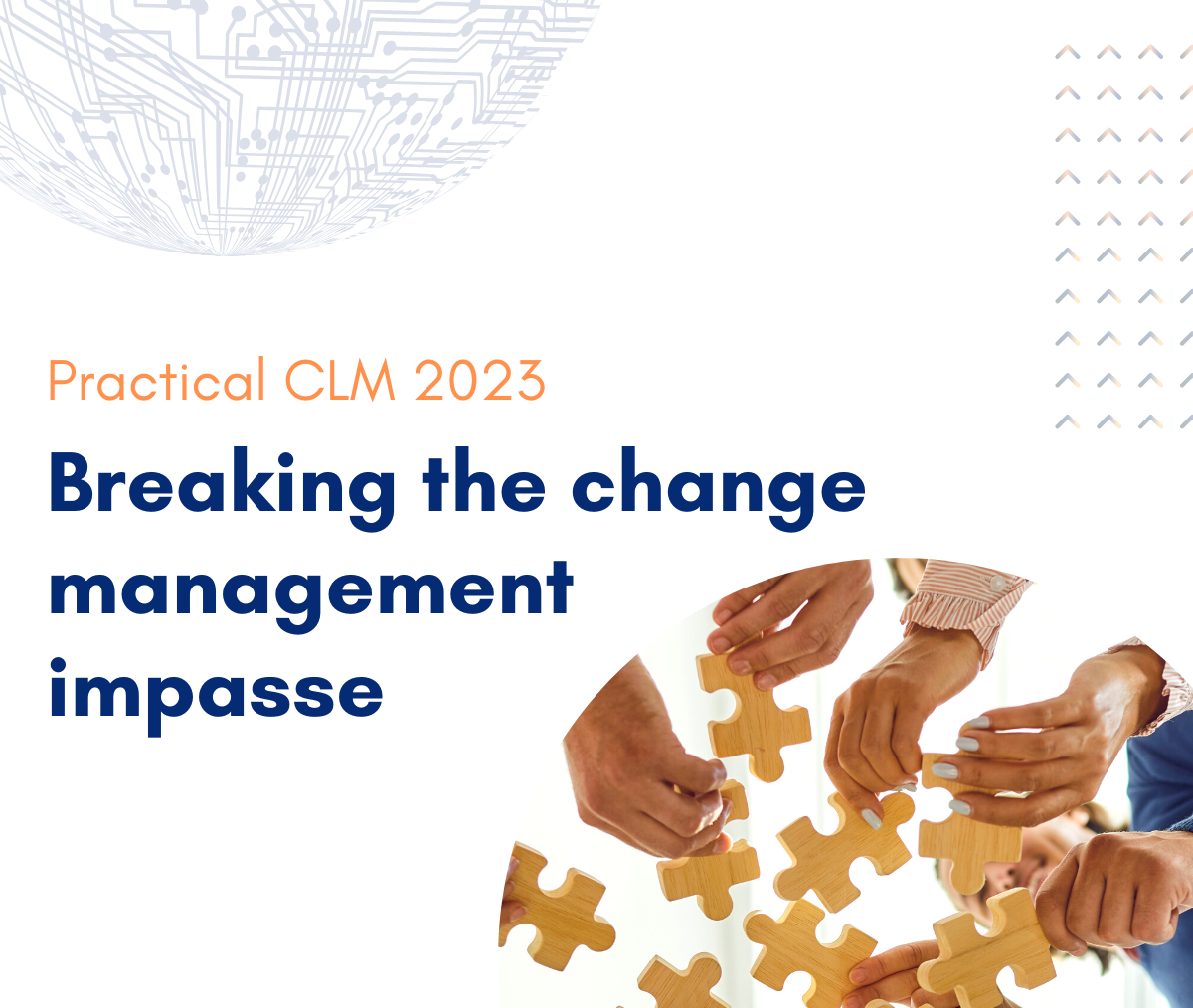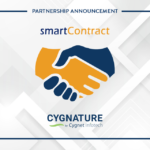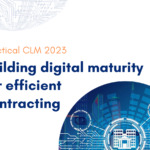Impressed by the flashy demos and marketing teasers of a CLM vendor, the General Counsel of a well-known conglomerate tried to impose the CLM on the company by a mandate. The expectation was that the tool will completely revolutionize their contracting process. But instead, chaos ensued. Why? Employees weren’t ready to change the processes and technology they have been using for years. None of the significantly affected groups like sales and procurement were represented in the implementation stakeholders’ team, which meant that the day-to-day challenges of many end users weren’t addressed. The project failed quite spectacularly with less than 25% adoption rate throughout its lifetime.
The lesson? Technology is not enough to drive effective transformation on its own, people should be at the heart of change and innovation.
But that’s not exactly news. Experts have been saying this for years now. What’s news is that the journey to successful change management, especially for solutions as complex as CLM, starts at vendor selection as most vendors are unable to offer the much-needed flexibility, which leads to irreversible problems down the road.
Introducing Impact First methodology
To break the change management impasse that is paralyzing CLM implementations, we have embraced the Impact First methodology at smartContract, which gives our clients the flexibility to phase out their CLM implementation path both horizontally and vertically to maximize impact.
It means we will work with our customers in small, iterative cycles to explore and solve challenges from the perspective of multiple stakeholders other than just legal. This enables us to not only deliver quick wins but also drive horizontal impact to get on board diverse CLM champions from across the organization. For example, we might start by first streamlining the contract request intake process – a pain point that affects multiple teams within an organization. Many companies still rely on emails to generate contract requests and legal often complains of being unable to properly manage and document these requests or having to chase the requestor for complete information. At the same time, business users like sales or procurement teams are also irked because there’s often no defined format to provide information for complex contracts.
With smartContract CLM, the contract request intake process can be standardized according to agreement type and the system can even generate the first contract draft if that agreement can be based on a standard template, delighting not only legal but also increasing efficiency for the requestor.
Consequently, we will work with our customers in multiple similar cycles to discover problems and create meaningful impact that compounds to powerful results over the course of implementation.
Why Impact First works
The goal of any internal digital transformation initiative, including a CLM implementation, should not be just to improve employee efficiency but also to empower them with the right tools that make them better at their job. For this, any effort must be preceded by a diagnostic phase and followed through with in-depth input from diverse employees. To digitize or automate specific parts of contracting processes, you can rely on the input of employees who have intimate knowledge about what works and what doesn’t in their day-to-day while navigating through the lifecycles of different contracts.
This is important because certain decisions to improve the overall contract lifecycle might not be part of a legal leader’s comfort zone. Integrations are a great example of this, legal might not know the customer lifecycle well enough to guide the CLM integration with a CRM in a way that’s practical for the sales team.
Under our Impact First methodology, the smartContract CLM solution is adapted to the needs of your organization by creating opportunities for two-way conversations to collect and incorporate input from different stakeholders who have intimate knowledge about what works and what doesn’t for their use cases.
Ultimately, this approach gives stakeholders more control over how the digital transformation will unfold and frames a CLM solution that empowers employees to become even better at what they were already great at doing.
This article is a part of smartContract’s Practical CLM 2023 series wherein each chapter will focus on the most prominent challenges with CLM solutions today and how we’ve been able to overcome them for our clients. Watch this space for upcoming articles or drop an email to pnarang@srtekbox.com with the subject “PC23” to be notified.




Popular Comments (41)
Sed ut perspiciatis unde omnis iste natus error sit voluptatem accusantium
fuck google
21 Dec 2023vurcazkircazpatliycaz.4zviZ5F3LG9A
sektor benim zaten amin evladi
21 Dec 2023vurucuteamgeldi.DKKDVh3r5sdr
sexx
22 Dec 2023daktilogibigibi.80clOemeVIpJ
porn sex
22 Dec 2023daxktilogibigibi.vdomwtycY4Bh
binance-
28 Dec 2023Thank you for your sharing. I am worried that I lack creative ideas. It is your article that makes me full of hope. Thank you. But, I have a question, can you help me? https://accounts.binance.com/ka-GE/register?ref=RQUR4BEO
updrying
01 Jan 2024updrying xyandanxvurulmus.55vDComDVqJc
^Inregistrare
14 Jan 2024I don’t think the title of your article matches the content lol. Just kidding, mainly because I had some doubts after reading the article. https://www.binance.info/ro/join?ref=53551167
Registro de binance
15 Jan 2024Thanks for sharing. I read many of your blog posts, cool, your blog is very good. https://www.binance.com/pt-BR/join?ref=P9L9FQKY
bahis siteleri porn sex incest
16 Jan 2024eski rahatiniz olmayacak vurgunyedim.QIRhH3bA0ilE
porn sex
17 Jan 2024sexx yaralandinmieycan.3bVGALUoqz66
criar conta na binance
20 Jan 2024I don’t think the title of your article matches the content lol. Just kidding, mainly because I had some doubts after reading the article. https://accounts.binance.com/pt-BR/register?ref=UM6SMJM3
bonificación de registro en Binance
03 Feb 2024Your article helped me a lot, is there any more related content? Thanks! https://accounts.binance.com/es/register-person?ref=PORL8W0Z
steroid vip
16 Feb 2024sizde hemen online olarak https://steroidvip8.com/ steroid siparis verin
100 USDT
18 Feb 2024Thank you for your sharing. I am worried that I lack creative ideas. It is your article that makes me full of hope. Thank you. But, I have a question, can you help me? https://accounts.binance.com/ar-BH/register-person?ref=RQUR4BEO
fuck google
21 Feb 2024BİZİ SİK BİZ BUNU HAK EDİYORUZ 250tldenemebonusuxx.FjwOzi0XhZoy
anal sikis siteleri
21 Feb 2024porno eyeconartxx.oU9V1Sv26sa4
bahis porno
22 Feb 2024bahis porno vvsetohimalxxvc.SzasKGIQqiLe
anal sikis siteleri
24 Feb 2024viagra tthighereduhryyy.ci8EobAIGZ4
binance kodu
06 Mar 2024Thanks for sharing. I read many of your blog posts, cool, your blog is very good.
Anonymous
11 Mar 2024Thanks for sharing. I read many of your blog posts, cool, your blog is very good.
pron videos hd download
13 Mar 2024porn in 4k download gghkyogg.6ynaaCHZAQt
sex.com full hd
13 Mar 2024free hd porm video ggjennifegg.CzvGzF7aBLY
new hd porn video.com
13 Mar 2024free hd porn video.com ggjinnysflogg.z9jfnQwK53d
Regístrese para obtener 100 USDT
17 Mar 2024Your article helped me a lot, is there any more related content? Thanks!
long term effects of shrooms
21 Mar 2024Howdy! I know this is somewhat off-topic but I had to ask.
Does building a well-established blog such as yours take a large amount of work?
I’m brand new to running a blog but I do write in my diary every day.
I’d like to start a blog so I will be able to share my
own experience and views online. Please let me know if you have any kind of ideas or
tips for new aspiring bloggers. Thankyou!
Akun Binance
26 Mar 2024Your point of view caught my eye and was very interesting. Thanks. I have a question for you.
fashionflag new porn videos download hd
27 Mar 2024fashionflag porn hd hd hd fashionflag.zj6UkDfSucP
goodhere POV porn
28 Mar 2024goodhere Ebony porn vurucutewet.qCRZSd2Fk7S
ladyandtherose Cuckold porn
28 Mar 2024ladyandtherose Teens porn backlinkseox.g3LEowLKSDv
jenniferroy エボニーポルノ
28 Mar 2024jenniferroy 集団セックス japanesexxporns.IFC7Q1ZH3u8
landuse Hairy porn
29 Mar 2024landuse Old and Young porn lancdcuse.S9oQjrQjpxX
falbobrospizzamadison Cunnilingus porn
29 Mar 2024falbobrospizzamadison Arab porn jkkıjxxx.gz4RqbtqVkm
सह शॉट अश्लील
30 Mar 2024लैटिन अश्लील qqyyooppxx.Fx9AX3Kf3lb
किशोर अश्लीलता के बा
30 Mar 2024समूह सेक्स के बारे में बतावल गइल बा hjkvbasdfzxzz.O998KPrkbDC
ग्रुप सेक्स के बारे में
01 Apr 2024पुरुष हस्तमैथुन अश्लील txechdyzxca.eTH2rgSdM6U
हेनतई, एनीमे पोर्न
02 Apr 2024बीबीडब्ल्यू अश्लील hkyonet.Bu0kRcURatE
swinger ਪੋਰਨ ਹੈ
03 Apr 2024ਲਾਤੀਨੀ ਪੋਰਨੋਗ੍ਰਾਫੀ madisonivysex.fNuJplrZ5Vf
ladesbet ਫੈਟਿਸ਼ ਪੋਰਨੋਗ੍ਰਾਫੀ ਹੈ
05 Apr 2024ladesbet ਗੁਦਾ ਪੋਰਨ ladesinemi.YiJVr78Kv1I
ladesbet 混合ポルノ
05 Apr 2024ladesbet ハードコアポルノ ladestinemi.5puIui8QTSk
najlepszy sklep
16 Apr 2024Wow, awesome weblog structure! How long have you been blogging for?
you made blogging look easy. The whole glance of your website is great,
let alone the content! You can see similar here e-commerce
binance
26 Apr 2024Your point of view caught my eye and was very interesting. Thanks. I have a question for you.